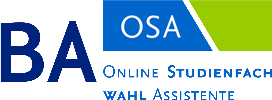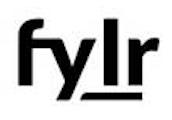Dr. Max Boersma
Kunsthistorisches Institut
Arbeitsbereich Prof. Dr. Eric de Bruyn
Wissenschaftlicher Mitarbeiter
Raum A 263
14195 Berlin
Sprechstunde
During the winter semester 2025–26, my office hours are:
- Thursdays, 10:00–12:00 (Room A263)
Please contact me by email to arrange a meeting.
Erasmus:
Please send Erasmus-related questions to the following address / Sie erreichen mich unter folgender Mailadresse:
exchangekunstgeschichte@geschkult.fu-berlin.de
Max Boersma is a scholar of European modernist and avant-garde art in a global context and a postdoctoral fellow at the Kunsthistorische Institut of the Freie Universität Berlin, offering seminars on modern and contemporary art in Europe and the Americas.
His current research focuses on interdisciplinary, transnational, and transcultural histories of abstract art, as well as intersections of art with histories of craft, science, technology, and design, particularly in Germany, France, Russia, and the early Soviet Union.
He received his PhD in the History of Art and Architecture at Harvard University in 2023. His research has received support from the German-American Fulbright Commission, the Richard and Susan Smith Foundation, the Davis Center for Russian and Eurasian Studies, and the Minda de Gunzburg Center for European Studies.
Prior to the FU Berlin, he held teaching positions at Williams College and Harvard University, and his writing has appeared in October, Grey Room, and Les Cahiers du Musée national d’art moderne.
Education
PhD, History of Art and Architecture, Harvard University
MA, History of Art, Williams College
BA, Art History, University of Colorado Boulder
Fellowships and Grants
- Arp Research Fellowship, Stiftung Arp, Berlin, 2024
- Presidential Scholar Dissertation Completion Fellowship, Graduate School of Arts and Sciences, Harvard University, 2022–23
- GSAS Dean’s Fund for Graduate Program Initiatives, Harvard University, 2023
- Krupp Foundation Dissertation Research Fellowship, Minda de Gunzburg Center for European Studies, Harvard University, 2021–22
- Graduate Research and Travel Grant, Davis Center for Russian and Eurasian Studies, 2021
- Fulbright Research Grant, Deutsch-Amerikanische Fulbright-Kommission, 2020–21
- Graduate Research and Travel Grant, Davis Center for Russian and Eurasian Studies, 2020–21
- Porter Travel Award (10-month grant), Harvard University, 2019–20
- Presidential Scholar, Graduate School of Arts and Sciences, Harvard University, 2016–18
- Richard and Susan Smith Foundation Fellowship, Harvard University, 2017–18
- Graduate Fellowship, Williams College Graduate Program in the History of Art, 2014–16
Awards and Honors
- Bowdoin Prize for Graduate Essay in the English Language, Harvard University, 2022–23
- Bowdoin Prize for Graduate Essay in the English Language, Harvard University, 2020–21
- Certificate of Distinction in Teaching, Harvard University, Spring semester 2019
- Certificate of Distinction in Teaching, Harvard University, Fall semester, 2018
- Fulkerson Leadership in the Arts Award, Williams College Museum of Art, 2016
Lehre
Winter Semester 2025–26
This seminar investigates the multiple meanings and potentials of so-called craft and artisanal practices within modernism, focused on the period from the 1910s to the 1960s in Europe and North America. Shifting attention away from modernism’s historically privileged mediums (painting, sculpture, photography, film), our focus will instead concentrate on weaving, embroidery, textile design, ceramics, and related forms of making. We will seek to ask: What opportunities did these practices offer for modernist experimentation, and how did they challenge hierarchies of gender, race, culture, medium, and labor in the process? Taking a dual perspective, course readings will both address reciprocal interactions between craft practices and canonical moments of modernist art, as well as highlight previously excluded or marginalized objects and makers, particularly women and BIPOC practitioners. Seminar discussions will likewise unpack complex conditions of transculturation, imperialism, and settler colonialism.
Ort: A 336 Übungsraum (Koserstr. 20)
Zeit: Mi 12:00-14:00
Erster Termin: 15.10.2025
Unterrichtssprache: Englisch
- Post-Cagean Aesthetics (with Prof. Eric de Bruyn)
This seminar explores the wide field of experimentation catalyzed by the anti-hierarchical, open-ended, collaborative, and cross-disciplinary aesthetic program of composer and theorist John Cage (1912–92). Bridging realms of music, dance, and avant-garde art, course readings trace the artistic paradigms and personal exchanges of Cage’s circle, including significant interfaces with Black Mountain College and the Fluxus movement. Important emphasis will be placed on the international character of these activities and the many women and queer practitioners within its networks, including Cage himself. The seminar features a mandatory excursion to the exhibition Five Friends: John Cage, Merce Cunningham, Jasper Johns, Robert Rauschenberg, Cy Twombly at the Museum Ludwig in Köln. Further key figures in the seminar include Nam June Paik, Shigeko Kubota, Charlotte Moorman, Allan Kaprow, Yoko Ono, Yvonne Rainer, and George Maciunas.
Ort: A 124 Übungsraum (Koserstr. 20)
Zeit: Do 14:00-16:00
Erster Termin: 16.10.2025
Unterrichtssprache: Englisch
Summer Semester 2025
This seminar provides an expansive introduction to the Dada art movement and its profound impact on global modern and contemporary art. Starting from its formation in Zürich in response to the first World War, course readings will follow the movement’s varied manifestations across Germany, France, and the United States, as well as highlight engagements with its ideas and approaches by artists from East Asia, Latin America, and the African diaspora. Students will become acquainted with Dada’s most characteristic artistic strategies—including performance, collage, photomontage, the readymade, and installation art—and their reinvention in distinct cultural, political, and social contexts, especially across the postwar period. The course will likewise complicate notions of the movement’s aesthetic radicality in light of its entwinement with primitivism and logics of European colonialism. The seminar meets bi-weekly.
Ort: A 163 Übungsraum (Koserstr. 20)
Zeit: Do 14:00-18:00
Erster Termin: 17.04.2025
Unterrichtssprache: Englisch
This seminar examines the dynamicrelationships between modern art and modernity in Europe and the Americas. Spanning roughly 1850 to 1950, the course frames “modernity” not as a single condition or project, but instead as the fraught convergence of numerous epistemic, technical, material, and cultural processes, forces likewise inextricable from Western imperialism and colonialism. Weekly readings will probe how such transformations shaped aesthetic practices and their larger social realities. Each session will focus on a single discrete process—such as “racialization,” “standardization,” “migration,” or “creolization”—as a means of reading specific works of art as well as broader conditions of experience, power, and subjectivity. Encompassing both canonical and lesser-known artists, this seminar ultimately aims to equip students with a deeper understanding of modern art and its forms of critique, reflection, and complicity within modernity.
Ort: A 125 Übungsraum (Koserstr. 20)
Zeit: Mi 12:00-14:00
Erster Termin: 16.04.2025
Unterrichtssprache: Englisch
- Lygia Clark and the Brazilian Neo-Avantgarde (with Prof. Eric de Bruyn)
In line with her major retrospective at the Neue Nationalgalerie during summer 2025, this seminar will examine the work of Brazilian artist Lygia Clark (1920–88) and her pivotal role in the development of postwar modernism in Brazil, notably within the movement known as Neoconcretismo (Neoconcrete art). Seminar meetings will trace the paradigmatic shifts of her career starting from the 1950s, encompassing rigorous geometric abstractions, participatory sculptures, performative actions, and experimental therapeutic strategies, including the discussion of related artists, such as Hélio Oiticica or Lygia Pape. Course readings will engage closely with both critical and artistic theorizations of her moment and important recent scholarship, including by scholars such as Irene Small, Mónica Amor, Sérgio B. Martins, and others. The seminar includes at least one mandatory excursion to the Neue Nationalgalerie and meets bi-weekly (see dates below). The seminar will be conducted in English and German.
Ort: A 163 Übungsraum (Koserstr. 20)
Zeit: Do 14:00-18:00
Erster Termin: 24.04.2025
Unterrichtssprache: Englisch
Winter Semester 2024–25
This seminar will undertake a novel examination of twentieth-century abstract art in light of histories of colonialism and coloniality. It seeks to ask: how was the emergence and development of abstraction within Euro-American modernism shaped by colonial and imperial relations of power? What cultural forces and interests aided its global spread as an artistic paradigm during the last century? And finally, how have the practices of Indigenous artists and those from the Global South confronted these issues and presented alternative genealogies for non-mimetic approaches to form? Course readings will first introduce canonical understandings of abstract art’s so-called “invention” within European modernism, before challenging the limitations and exclusions of such accounts in the context of colonial modernity and exploring new attempts to reframe the transcultural exchanges enabled by abstraction.
- History of Photography (with Prof. Eric de Bruyn)
Little studied before the 1970s, the history of photography is now one of the most active and intellectually dynamic areas of art historical research. This seminar will offer a foundational survey of photography's history with special attention to emerging voices and recent thematic concerns. Starting from the medium’s invention in the 19th century, course readings will address a broad range of geographic contexts up to the present, featuring core topics such as pictorialism, colonialism, social documentary, photomontage, photoconceptualism, and AI. Throughout the semester, students will obtain knowledge of various photographic processes, as well as gain familiarity with the numerous and ongoing critical debates surrounding the medium.
Summer Semester 2024
This seminar examines the dynamic relationships between modern art and modernity in Europe and the Americas. Spanning roughly 1850 to 1970, the course frames “modernity” not as a single condition or project, but instead as the fraught convergence of numerous epistemic, technical, material, and cultural processes, forces likewise inextricable from Western imperialism and colonialism. Weekly readings will probe how such transformations shaped aesthetic practices and their larger social realities. Each session will focus on a single discrete process—such as “extraction,” “racialization,” “standardization,” “migration,” or “creolization”—as a means of reading specific works of art as well as broader conditions of experience, power, and subjectivity. Encompassing both canonical and lesser-known artists, this seminar ultimately aims to equip students with a deeper understanding of modern art and its forms of critique, reflection, and complicity within modernity.
Close looking is a foundational skill to the practice of art historians, a type of visual engagement and patient attention distinct from most everyday experiences with images. This seminar introduces close looking both theoretically and practically, enabling students to develop an original research paper out of their own firsthand observations of a work of art. For this task, students will take part in an excursion to the Neue Nationalgalerie, where each student will select a single artwork for a guided, three-hour close looking exercise. Before this museum excursion, a series of initial meetings will focus on key concepts, techniques, and benefits of visual analysis, emphasizing the capacity for close looking to generate new insights and questions. Following the exercise, students will present their own findings and reflections, which will then form the basis for final papers.
Winter Semester 2023–24
Amid political revolutions and widespread social movements, the interwar period in Europe (1918–39) witnessed a dramatic reinvention of the figure of the artist and a broad questioning of the role of art in everyday life. Centered around movements such as Dada, Constructivism, and De Stijl, as well as institutions like the Bauhaus and Vkhutemas, these activities engaged directly with technological shifts and industrial production, generating new formats and avenues for artistic production (textiles, photomontage, graphic design, exhibition displays, and more). Surveying this rich field of experimentation, this seminar places special emphasis on the role of women and the productive breakdown of notions of art, craft, and design.
Perhaps no single art movement within Western modernism is as constitutive and contested as cubism. While the artists under this label introduced crucial new paradigms for artistic production, they did so in ways deeply entangled with violent histories of European imperialism and colonialism.
Accordingly, this seminar pursues three primary tasks. First, students develop a working understanding of cubism as it first unfolded in Paris between the years 1906 and 1917. Next, the seminar critically examines prominent theoretical models for interpreting cubist practices, among them formalism, social art history, structuralist semiotics, feminist critique, and postcolonial theory. Finally, the course turns to artists who both engaged with cubism—including Diego Rivera, Tarsila do Amaral, Wifredo Lam, and Faith Ringgold—and challenged its foundational tenets, premises, and exclusions.
Summer Semester 2023
This course examines the global phenomenon of 20th century abstract art, concentrating on the medium of painting—broadly defined—from the interwar period through the early 1970s. Rather than attempting a comprehensive survey, weekly readings will engage students with recent scholarship on abstraction in a variety of contexts, including Europe, the Americas, Asia, and the Arab World. The seminar will balance investigations into cultural contacts, transnational networks, comparative models, and shared concerns (materiality, color, composition, gesture, and subjectivity) with attention to autochthonous practices and specific regional and national conditions. The politics of abstraction will likewise be approached from several distinct perspectives, highlighting entanglements in both cultural imperialism and decolonial movements as well as issues of gender, race, and class.
Books:
Technical Implications: The Making of Interwar Abstraction (under peer-review)
Journal Articles:
- “Ethnographic Abstraction and Sophie Taeuber-Arp,” New Voices in German Visual Culture, edited by Anne Grasselli, forthcoming.
- “Taeuber in Toledo,” Stiftung Arp e.V. Magazine, forthcoming.
- “Global Patterns: Hannah Höch, Interwar Abstraction, and the Weimar Inflation Crisis,” Grey Room 91 (Spring 2023): 6–35. Link.
- “Le patron dégenré: Hannah Höch, le cubisme et les collages-dessins,” Les Cahiers du Musée national d’art moderne, no. 159 (Spring 2022): 40–52. Link.
- “From Material to Infrastructure: Germaine Krull’s Métal,” October 173 (Summer 2020): 118–142. Link.
Recent and Upcoming Presentations:
- “‘Prolific in Invention’: Sophie Taeuber-Arp, Ethnography, Labor,” Modern Women and Textile Politics, CAA 114th Annual Conference, February 18–21, 2026
- “Anwar Jalal Shemza’s Transcultural Abstraction,” Navigating Multiplicity: Artistic Exchanges in East, Southeast, and South Asia 1950s-1980s, documenta Institut, May 25, 2025
- Session organizer with Cora Chalaby, Abstraction, Artisanal Knowledge, and Craft Epistemologies, Association for Art History 2025 Conference, April 9–11, 2025
- Session organizer with Julia Silverman, Abstract Art and Colonial Systems, CAA 113th Annual Conference, February 12–15, 2025
- “Abstraction and Transculturation: Anwar Jalal Shemza, Paul Klee, Tunisia,” Rethinking Modernism in North Africa and the Arab World, Symposium at Tate Modern, November 20, 2024
- “‘Ruthless Restriction’: The New Typography and the Transnational Politics of Script,” Research Forum for German Visual Culture Seminar Series, University of Edinburgh, June 19, 2024
- “Tangibilities and Intangibilities of the Paper Pattern [on Hannah Höch and Derrick Adams],” CAA 112th Annual Conference, Chicago, February 15, 2024
- “Global Patterns: Hannah Höch, Interwar Abstraction, and the Weimar Hyperinflation Crisis,” European Network for Avant-Garde and Modernism Studies, 8th Biannual Conference: Globalising the Avant-Garde, Lisbon, Sept. 1–3, 2022
- “Total Eclipse: Aleksandr Rodchenko, Brazil, and the Imperialist Imagination of Nonobjective Painting,” Association for Art History Conference, April 3–8, 2022
- “Hannah Höch’s Degendered Geometries,” Elles font l’abstraction. Une autre histoire de l’abstraction au XXe siècle, Symposium at Centre Georges Pompidou Paris, May 19–20, 2021
- “‘To inhabit, uneasily, the intersection:’ Germaine Krull and the Photographic Book,” Association for Art History 2021 Conference, April 14–17, 2021
Other Publications:
- “Spirit and Technology: Geometry in Abstract Art” and “Universal Language of Abstraction: Bauhaus and Concrete Artists,” in Kandinsky’s Universe: Geometric Abstraction in the 20th Century (Munich: Prestel, 2025), 68–73, 98–103.
- “Elegy to Construction,” in Polina Joffe, Ode to Construction – Abstraction in the Digital Age (Eindhoven: Onomatopee, 2020), 14–31. Co-written with Madeleine Morley.
- Project awarded Bronze Medal by the Stiftung Buchkunst, Best Book Design from all over the World, 2023
- “Staging the ‘Nautch Girls,’” in Women in South Asian Art, digital publication, Harvard Art Museums, January 2018.
- “Selected Bibliography,” in Kevin M. Murphy, “Not Theories but Revelations:” The Art and Science of Abbott Handerson Thayer (Williamstown, MA: Williams College Museum of Art, 2016), 119–126.




